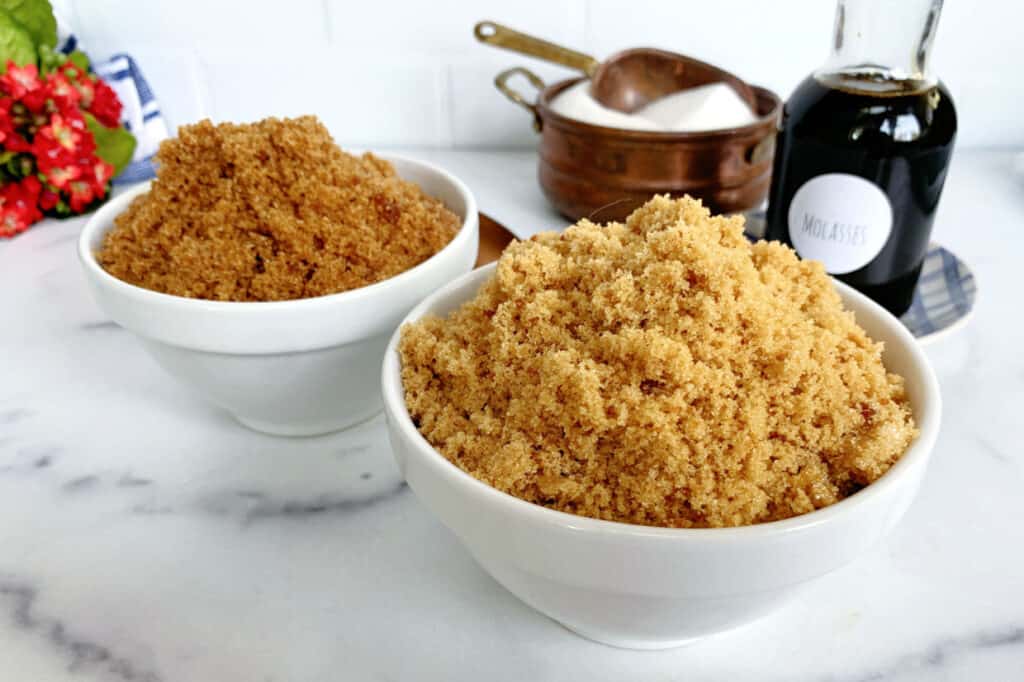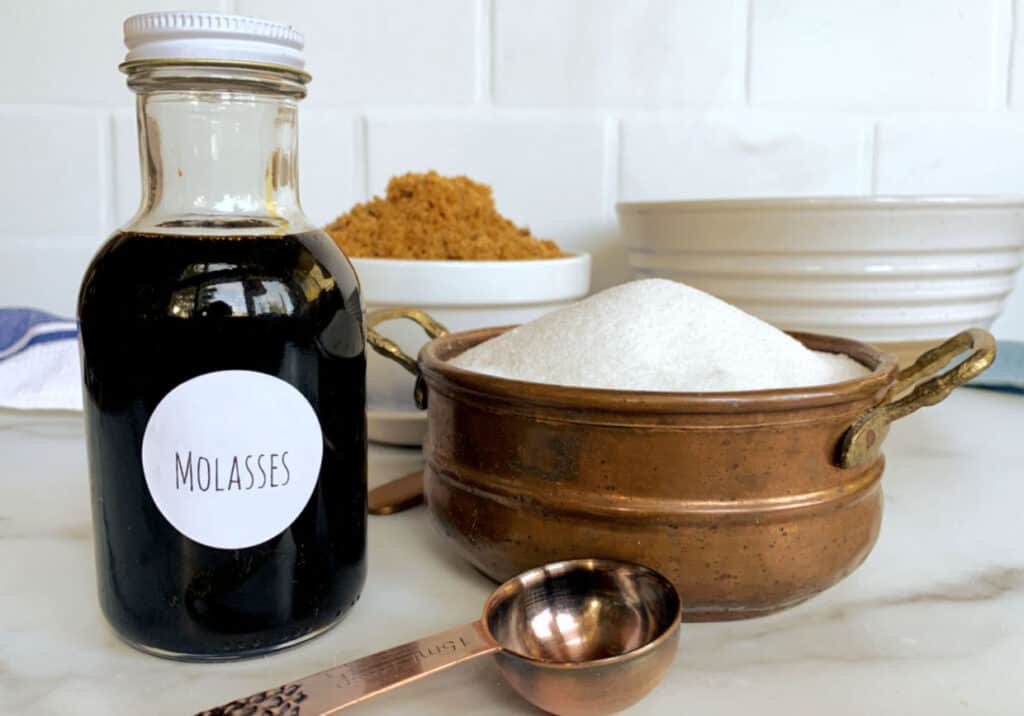Ever find yourself in a pinch, realizing you’re fresh out of brown sugar just when you’re about to make a batch of cookies or sweeten your morning oatmeal? No need to panic. Learn how to make brown sugar in just 5 minutes with granulated sugar and molasses. You will always have brown sugar on hand without needing a last-minute store run.

Brown sugar, with its rich flavor and caramel undertones, is a staple ingredient in countless recipes. The beauty of making your own brown sugar lies in its simplicity — chances are, you already have everything you need in your pantry. Learn to make light brown sugar or aim for a deeper flavor profile with dark brown. This recipe takes 5 minutes and involves two ingredients and a few quick steps.
Brown sugar has much to offer
Brown sugar offers a distinct flavor profile and texture that granulated sugar lacks. For several reasons, brown sugar is a preferred choice in many recipes.
Flavor: Brown sugar contains molasses, which adds a rich, caramel-like flavor and depth to baked goods and other dishes. This flavor profile enhances the overall taste and complexity of the recipe, especially in items like cookies, cakes and sauces.
Moisture: Brown sugar retains more moisture than granulated sugar due to its molasses content. This moisture contributes to cookies’ soft, chewy texture and helps keep baked goods moist and tender.
Color: The molasses in brown sugar gives it a darker color compared to the white hue of granulated sugar. This color can impart a desirable golden or caramel tint to baked goods, enhancing their appearance.
Versatility: Brown sugar is incredibly versatile and can be used in various recipes, from sweet to savory. Its distinct flavor can complement a wide range of ingredients, making it a go-to choice for many bakers.
You can make light and dark brown sugar
Creating your own brown sugar is simple with just two key ingredients: granulated sugar serves as the base, while unsulfured molasses brings a rich, caramel-like flavor to the mix. You can make either light or dark brown sugar using different proportions of these ingredients. Both are used in cooking and baking, and you may have a preference for one over the other. Here are some differences to help you decide which to use.

Light brown sugar
Understanding the distinction between light and dark varieties is essential when crafting your own brown sugar. With its lower molasses content, light brown sugar offers a milder flavor and lighter color, making it perfect for recipes with a delicate sweetness, such as cookies and glazes.
Dark brown sugar
Dark brown sugar contains more molasses than light brown sugar, resulting in a darker color ranging from medium brown to deep amber. It boasts a more pronounced and robust flavor with stronger caramel and toffee notes, adding a richer flavor to baked goods and savory dishes. It is preferred for recipes that require a more intense sweetness and molasses flavor, such as gingerbread, barbecue sauce and marinades.
Easy steps to make brown sugar
The basic ratio for making brown sugar is typically 1 tablespoon of molasses for every cup of granulated sugar. Here’s a simple breakdown:
- Light brown sugar: 1 tablespoon of molasses for every cup of granulated sugar.
- Dark brown sugar: 2 tablespoons of molasses for every cup of granulated sugar.
You can adjust the amount of molasses based on your personal preference for the color and flavor of the brown sugar. Here are the easy steps for homemade brown sugar.
- Measure out the desired amount of granulated sugar and place it in a mixing bowl.
- Add the appropriate amount of molasses to the bowl, following the light or dark brown sugar ratio.
- Mix the sugar and molasses together using a fork, a sturdy spoon or a spatula.
- Continue mixing until the sugar and molasses are fully combined and no streaks of molasses remain. The mixture should be uniform in color and texture.
- You can store the homemade brown sugar in an airtight container or use it immediately in your favorite recipes.
If you are having trouble mixing the molasses into the sugar, try using a mixer or a food processor. You’ll achieve a perfectly blended mixture of homemade brown sugar with patience.

If I run out of brown sugar, I add molasses to white sugar to make a quick and easy substitute. It works well in recipes with leaveners because it still provides lift to recipes that need it, such as cookies.
— Laura Sampson, Little House Big Alaska
Alternative sweeteners for brown sugar
Even though molasses is the standard sweetener when making brown sugar, you can experiment with other sweeteners to create variations with unique flavors.
- Maple syrup: Mix 1 cup of granulated sugar with 2 tablespoons of maple syrup until well combined.
- Honey: Combine one cup of granulated sugar with one-fourth cup of honey.
- Agave nectar: For every cup of granulated sugar, you will need about a quarter to one-third of a cup of agave nectar.
Experimenting with these sweeteners can enhance the flavor of your recipes while providing a unique twist on traditional brown sugar. Just remember that the taste and texture of your final product might change based on which sweetener you choose, so feel free to adjust the amounts to suit your taste preferences.
Storing brown sugar
Since brown sugar loses moisture over time and hardens, proper storage with a touch of moisture is key to keeping your homemade batch soft and preventing those dreaded rock-hard clumps:
- Choose a glass or plastic container with a tight-fitting lid. This helps trap any existing moisture and prevents further evaporation.
- Add some moisture by soaking a terra cotta disk in water for a few minutes, then place it in the container with your brown sugar. The disk will slowly release moisture to keep the sugar soft. Or, try natural softeners like placing a slice of bread or an apple in a container of brown sugar to prevent it from hardening.
Learning to make brown sugar is a handy skill for home cooks. With just granulated sugar and molasses, you can enhance the flavor of your favorite recipes with brown sugar. Whether you prefer light brown sugar or dark brown sugar, the process is simple. Experiment with different sweeteners to add unique flavors to your dishes, and store your brown sugar properly to keep it soft and ready for use. With these tips, you’ll never be caught without brown sugar again.
Jere’ Cassidy is the writer and recipe developer behind the blog One Hot Oven. A passion for all things food-related led her to culinary school to expand her baking skills and now to share easy recipes for all home cooks and bakers of all skill levels. When not in the kitchen, Jere’ likes to travel far and wide to find delicious food.